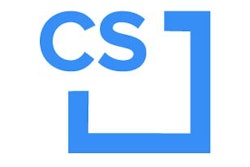
The U.S. Food and Drug Administration's (FDA) release on Monday of its long-awaited final guidance on mobile medical applications was designed to address market confusion over its policy for regulating these apps. While some questions remain, the guidance offers app developers a path forward in determining how to secure regulatory clearance for their products.
The guidance makes it clear that mobile apps that display radiological images for diagnosis transform mobile devices into class II PACS applications; therefore, they will require 510(k) applications before they can be marketed, as do most radiology software applications and devices.
In addition, the agency has confirmed to AuntMinnie.com that mobile medical apps designed for referring physicians to review medical images will be regulated as class I devices, falling under the new FDA app guidance but not requiring 510(k) clearance. Apps designed for patient use will not be regulated under the guidance, the agency specified in announcing the new rules.
Patient safety or app innovation?
The FDA announced its new policy on a September 23 conference call that raised nearly as many questions as it answered, particularly regarding how the agency intended to regulate apps for use by referring physicians. The FDA is trying to find a tricky path between ensuring patient safety and fostering app innovation, according to Dr. David Hirschorn, director of radiology informatics at Staten Island University Hospital.
"They said that if they identify companies doing something which appears noncompliant with their guidelines, they will initially try to work with that company to get it compliant, rather than stand in its way," Hirschorn said. "So that should give vendors enough of a green light that they should not fear trying to innovate new and better products."
In a statement on Thursday to AuntMinnie.com, an FDA spokesperson acknowledged that the agency will treat mobile apps designed for diagnostic or advanced image processing use differently from those designed for reference purposes by referring physicians. The agency will regulate as class I devices mobile medical apps that transfer or store radiological data not intended for diagnostic use.
The FDA will regulate as class II devices radiology mobile medical apps that are intended for diagnostic use or that include advanced image processing, such as organ segmentation or ventricular volume calculation, the FDA statement said.
Apps designed for referring physician use will be considered class I devices, which means they can proceed to market without a 510(k) application. This is likely to speed the time to market for these kinds of apps.
The American College of Radiology (ACR) is currently reviewing the guidance for any effects on its offerings, as well as any downstream effects on physician end users, said Michael Peters, director of legislative and regulatory affairs. As a general observation, most of the revisions in the final guidance from the 2011 draft appear to be clarifications instead of indicating major changes in approach, Peters said.
"I would point out that the FDA staff's task here was huge with the various stakeholders and external pressures, including the FDA Safety and Innovation Act deliberations in Congress in 2012 and the FDA-FCC-ONC FDASIA Workgroup efforts in 2013," Peters said. "I applaud the agency for making every effort to chug forward, educate the public, and address various concerns under those conditions."
A medical device
The FDA mobile app guidance states that "if a mobile app is intended for use in performing a medical device function -- i.e., for diagnosis of disease or other condition, or the cure, mitigation, treatment, or prevention of disease -- it is a medical device," said Cristine Kao, global marketing director for Carestream Health's healthcare information solutions unit.
"We understand that medical images and diagnostic reports play an important role in patient care when used by radiologists and referring physicians," she said. "We also see a trend of clinicians and referring physicians requesting more advanced clinical toolsets from imaging viewers. We anticipate that all image viewers -- whether intended for referring physicians or other clinicians -- will need to have FDA clearance for diagnostic use as a medical device."
Kao noted that "companies with dedicated software applications may need to write new code for each operating system and revalidate each operating system with the FDA, as required by the guidance. This [guidance] sets a fair outline for all vendors to work with," she said.
The guidance affirms that mobile image viewing applications should pass through the FDA, said Kyle Peterson, director of regulatory affairs for Calgary Scientific.
"If you pull data from the PACS, render it on a mobile device, and display it for use by a physician, then it's a regulated device," he said. "Even if you label it and say, well, this is really for secondary view [or] nondiagnostic, if it talks to a PACS and renders images, it falls into that category and should go through the FDA."
The FDA has pretty specific guidance on labeling, and vendors won't be able to hide by massaging the language in a product's label, saying apps are not for diagnosis, if it has that kind of functionality, Peterson said.
The guidance's effect on medical imaging apps will be small, however, said Mark Cain, chief technology officer for MIM Software, which was the first firm to receive FDA clearance for a mobile application for diagnostic purposes.
"For companies like us, regulatory clearance is part of our business," Cain said. "By definition, diagnostic tools are regulated medical devices, and this guidance doesn't change that. However, for developers of low-risk apps, the clarity this guidance brings should increase confidence going forward."
The FDA will now start to look at postmarket experience with mobile medical apps to ensure that vendor claims of safety and efficacy hold up in clinical practice, Calgary Scientific's Peterson said.
Apps for patients
The biggest effect of the guidance will be on applications designed for patient use, Carestream's Kao said.
"The imaging industry is shifting toward more patient-oriented services, and we are at the forefront of 'helping patients self-manage their disease or conditions without providing specific treatment or treatment suggestions,' as specified in the guidance," she said. "Giving patients access to radiology reports and imaging studies through use of a secure patient portal also helps patients document, show, or communicate potential medical conditions to healthcare providers, which is also encouraged in the guidance."
Mobile applications will continue to have a huge impact in healthcare, and this guidance helps give vendors a clear road map for how to proceed with developing additional applications, said Pierre Lemire, president and chief technology officer at Calgary Scientific.




















